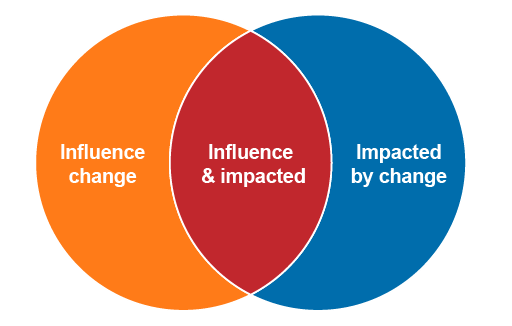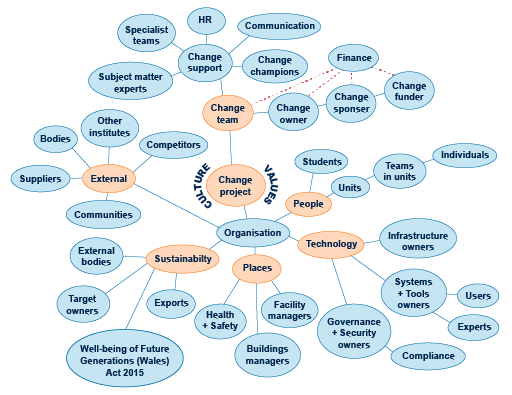3.3 Engaging stakeholders
Engaging stakeholders is a continual process, and the power and/or dependencies on these stakeholders will change throughout your change initiative. Depending on how formal your change initiative is, you may have a project sponsor(s) who will be your most important stakeholder(s), as ultimately you have been entrusted to deliver their initiative.
Stakeholders are ‘individuals and organizations who are actively involved in the project, or whose interests may be positively or negatively affected as a result of project execution or successful project completion’ (Project Management Institute (PMI®), 1996).
One frequent problem those leading change encounter is that stakeholders may not be aware of the changes required and may not be interested in or understand the need for change. Often some changes will not be a priority for organisations, so evidence for change is important to help ensure the changes that have been identified are prioritised.
One of the first activities you should carry out is a stakeholder analysis to identify your stakeholders. It can be useful to think about stakeholders in terms of influence and impact to identify who they may be. The figure represents a way of identifying stakeholders.
Influence change: These are stakeholders who have the power to make decisions and/or the resources/tools/people you require to help implement change.
Influence and impacted: These are people who will be impacted by the change but, due to their roles/knowledge/experience or ownership of tools/systems, are stakeholders you will need to actively engage with, either for requirements analysis or support, or they may be people you will need to help you implement and sustain change, such as team leaders who may have the influence to help you succeed or not.
Impacted by change: These are stakeholders who will not have influence or necessarily be involved directly in any requirements but will have to adapt to the changes implemented.
You may know who your stakeholders are, but it can be sensible to review them by creating a stakeholder map. By visualising both your internal and external stakeholders, it can help you clarify who they might be and identify those you may not have considered. It is advisable to collaborate with others when doing this and look at your organisation’s strategy – are there focal areas within it that might include stakeholders that you have not considered?
When leading complex or large-scale change projects, it can be useful to categorise your stakeholders and then look for the interdependencies. In the stakeholder map below based on an organisational change initiative, a high-level approach was taken to start to identify groups of stakeholders, using the ‘Hybrid ways of working: a contextual sustainability framework’ to think about different organisational needs.
This then allows you to break the groups down further and identify individuals who should be engaged directly with the change project.


